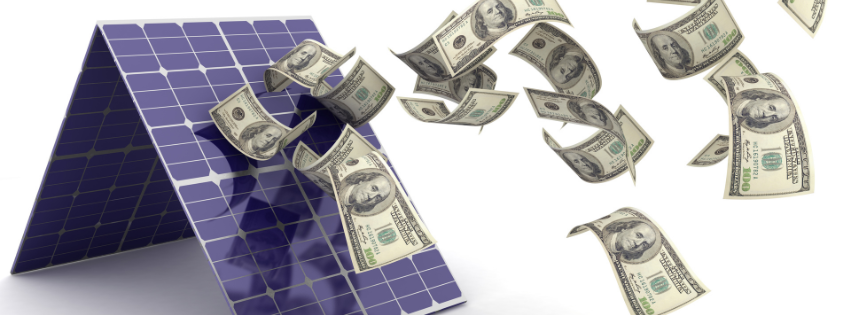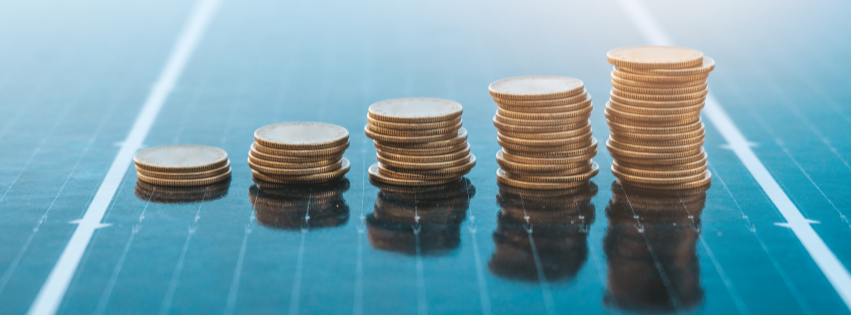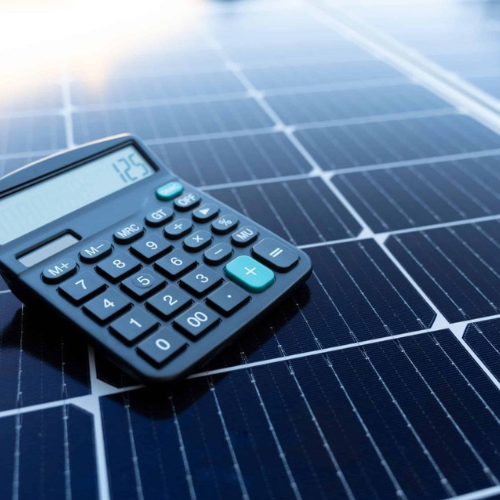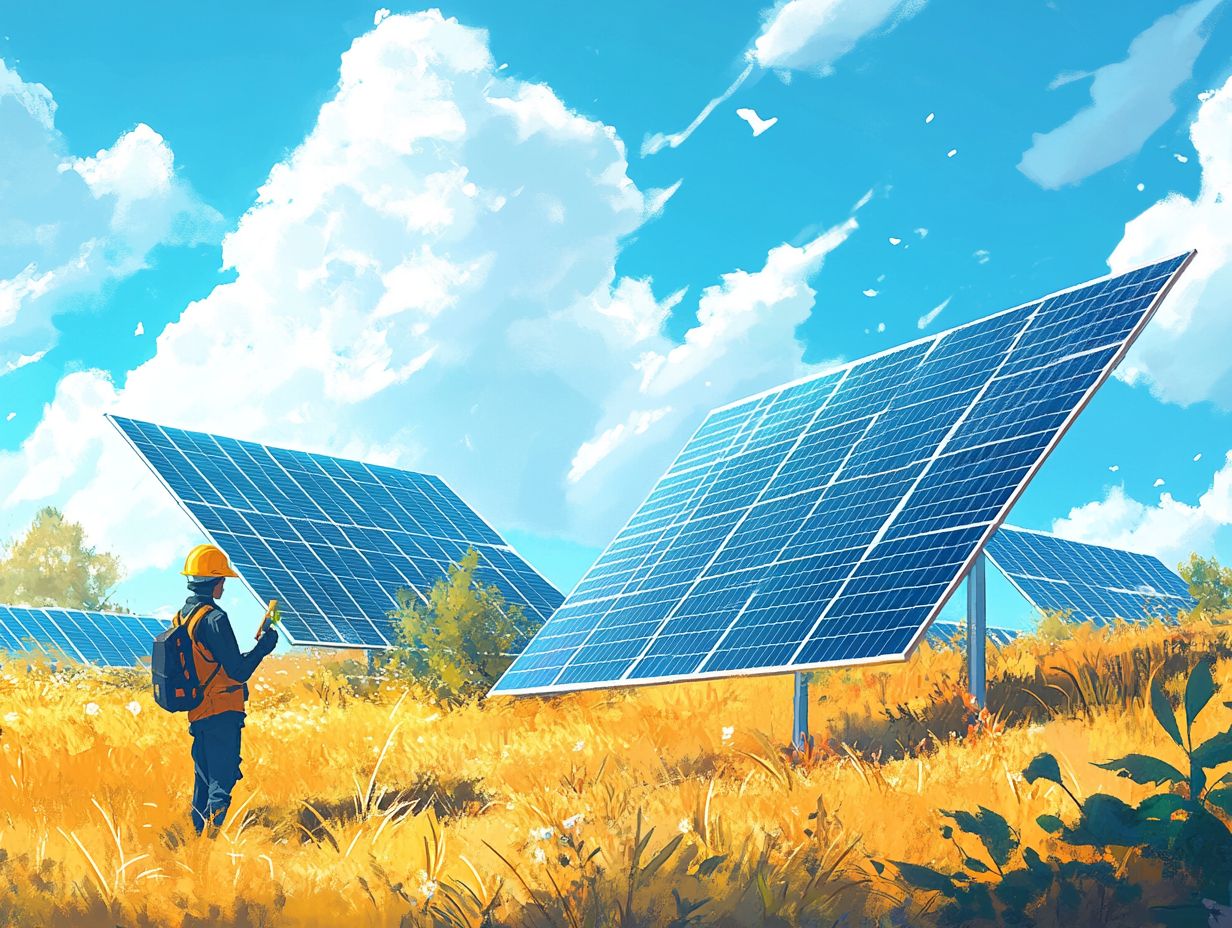Contents
- 1 The Economics of Going Solar: Sunny Savings and More
- 2 From Panels to Profits: The ROI of Solar
- 3 Beyond the Bill: Environmental Impact and Feel-Good Factor
- 4 The Tech Behind the Savings: Modern Solar Panels
- 5 Overcoming the Hurdles: Addressing Solar Challenges
- 6 Making the Switch: Starting Your Solar Savings
- 7 The Future is Bright: Solar Savings 2.0
- 8 Understanding Solar Panel Efficiency
- 9 The Role of Inverters in Solar Systems
- 10 Solar and Home Energy Management
- 11 The Environmental Impact of Solar Manufacturing
- 12 Solar Energy and Grid Resilience
- 13 The Social Impact of Solar Energy
- 14 Financing Options for Solar Installations
- 15 Maintenance and Longevity of Solar Systems
- 16 Solar Energy and Electric Vehicles: A Perfect Match
- 17 The Global Perspective: Solar Energy Around the World
- 18 Key Takeaways:
- 19 People Also Asked
- 19.1 How much does a solar panel system cost?
- 19.2 How long do solar panels last?
- 19.3 Do solar panels work in cloudy weather?
- 19.4 Can I install solar panels myself?
- 19.5 How much can I save with solar panels?
- 19.6 What is net metering?
- 19.7 Are there any government incentives for installing solar panels?
- 19.8 How do solar panels impact home value?
- 19.9 What maintenance do solar panels require?
- 19.10 Can I go completely off-grid with solar panels?
I’ve got to tell you, there’s something incredibly satisfying about watching your electric meter spin backward. It’s like a tiny rebellion against rising energy costs, and it’s all thanks to the power of the sun.
Solar savings are a revolution in how we think about energy consumption and production.
When I first started exploring solar energy, I was skeptical. Could those sleek panels really make a dent in my ever-growing electricity bill?
Turns out, they can do that and so much more.
Solar savings involve taking control of your energy future while also contributing to environmental stewardship.
The Economics of Going Solar: Sunny Savings and More
At first glance, the upfront cost of solar panels might make you wince. I get it – I felt the same way.
But solar is an investment that keeps on giving.
Think of it as planting a money tree on your roof.
The average American household can save between $10,000 and $30,000 over the lifetime of their solar panel system. That’s not pocket change – that’s college tuition or a down payment on a house.
And with solar panel costs dropping by more than 70% since 2010, the barrier to entry is lower than ever.
Many states offer net metering programs, which means the power company pays you. When your panels produce more electricity than you use, you can sell the excess back to the grid.
It’s like having a lemonade stand, but instead of lemonade, you’re selling sunshine.
The federal solar investment tax credit (ITC) allows you to remove 30% of the cost of installing a solar energy system from your federal taxes. It’s a significant incentive for being environmentally conscious.
From Panels to Profits: The ROI of Solar
So, this could make you wonder how long it takes to see those savings. The payback period for solar panel installations in the US typically ranges from 5 to 10 years.
After that, it’s all profit.
Here’s something that might surprise you: solar panels can increase your home value by an average of 4.1%. It’s a home improvement project that pays you back.
You won’t get that kind of return on a new kitchen backsplash!
Beyond the Bill: Environmental Impact and Feel-Good Factor
While saving money is great, there’s something even more valuable at stake: our planet. By switching to solar, the average household can reduce its carbon footprint by 3-4 tons of CO2 per year.
That’s equivalent to planting 100 trees every single year.
Solar energy plays a crucial role in reducing air pollution, conserving water resources, and even preserving wildlife habitats. It’s a way to make a tangible difference in the world, starting right from your own rooftop.
The Tech Behind the Savings: Modern Solar Panels
Solar technology has come a long way since those clunky panels of yesteryear. Today’s solar cells are like the smartphones of the energy world – sleek, effective, and constantly evolving.
Take perovskite solar cells, for instance. These next-gen marvels promise higher efficiency and lower production costs.
Or consider building-integrated photovoltaics (BIPV).
Solar cells can now be seamlessly integrated into your windows or roof tiles. It’s not science fiction – it’s happening now.
And let’s not forget about storage. Solar-plus-storage systems are addressing the “but what about nighttime?” question, allowing for 24/7 renewable energy use.
It’s like having a miniature power plant in your garage.
Overcoming the Hurdles: Addressing Solar Challenges
I’d be remiss if I didn’t address some of the challenges. Yes, the initial costs can be substantial.
Grid integration can be tricky, especially in areas with outdated infrastructure.
And let’s face it, not everyone has a perfectly angled, south-facing roof.
But for every challenge, there’s a solution emerging. Community solar projects are making solar accessible to renters and those with less-than-ideal roof situations.
Innovative financing options are helping to spread out the upfront costs.
And as for grid integration? Smart inverters and microgrids are paving the way for a more flexible, resilient energy system.
Making the Switch: Starting Your Solar Savings
Ready to bask in the glow of solar savings? Here’s a quick roadmap to get you started:
- Assess your energy needs and roof suitability
- Research local installers and get many quotes
- Explore financing options, including loans, leases, and power purchase agreements
- Check for available incentives in your area
- Schedule your installation and prepare for the big day
- Enjoy watching your meter run backward and your savings grow
Going solar is a life-long habit to form. As technology advances and energy markets shift, stay informed and be ready to adapt. You might even become the go-to solar guru in your neighborhood.
The Future is Bright: Solar Savings 2.0
As we look to the future, the potential for solar savings only grows brighter. Solar fabrics that can charge your phone while you walk, or space-based solar power beaming clean energy back to Earth are on the horizon.
The possibilities are as limitless as the sun’s energy itself.
Solar savings are a pathway to energy independence, environmental stewardship, and a more sustainable future. So why not harness the power of the sun and let your savings shine?
Understanding Solar Panel Efficiency
Solar panel efficiency is a crucial factor in determining how much energy your system will produce. The efficiency of a solar panel refers to how much of the sun’s energy it can convert into usable electricity.
Most commercially available solar panels have an efficiency rating between 15% and 22%.
Higher efficiency panels will produce more electricity in the same amount of space, which can be particularly useful if you have limited roof area. However, these high-efficiency panels often come with a higher price tag.
Be aware that panel efficiency isn’t the only factor to consider. The overall system design, including factors like panel orientation and tilt, can significantly impact your solar energy production.
The Role of Inverters in Solar Systems
Inverters are the undervalued assets of solar power systems. These devices convert the direct current (DC) electricity produced by your solar panels into alternating current (AC) electricity that can be used in your home or fed back into the grid.
There are three main types of inverters:
- String inverters: These are the most common and cost-effective option.
They’re great for systems where all panels receive similar amounts of sunlight.
- Microinverters: These are installed on each person panel, allowing for panel-level optimization.
They’re ideal for systems where some panels might be shaded or facing different directions.
- Power optimizers: These are a hybrid solution, combining some of the benefits of microinverters with the cost-effectiveness of string inverters.
The choice of inverter can significantly impact your system’s performance and long-term savings.

Solar and Home Energy Management
Solar panels are just one part of a comprehensive home energy management strategy. To maximize your savings and energy independence, consider integrating your solar system with other smart home technologies.
Smart thermostats, for example, can help you improve your energy use by adjusting your heating and cooling based on your solar production. Energy monitoring systems can provide real-time data on your energy production and consumption, helping you make informed decisions about when to use high-energy appliances.
Some homeowners even pair their solar systems with electric vehicle charging stations, using their solar energy to power their transportation as well as their home.
The Environmental Impact of Solar Manufacturing
While solar energy is clean and renewable once installed, it’s important to consider the environmental impact of solar panel manufacturing. The production process does need energy and resources, and some rare earth elements are used in the panels.
However, studies have shown that the energy used to manufacture solar panels is typically recouped within 1-4 years of operation, depending on the type of panel and where it’s installed. Given that solar panels typically last 25-30 years, this means they produce clean energy for the vast majority of their lifespan.
Plus, the solar industry is continually working to improve manufacturing processes and reduce environmental impact. Recycling programs for old solar panels are also becoming more common, further reducing the long-term environmental footprint of solar energy.
Solar Energy and Grid Resilience
As more homes and businesses adopt solar power, it’s having a significant impact on our electrical grid. Distributed solar generation can help reduce strain on the grid during peak demand periods, potentially reducing the need for new power plants and transmission lines.
Solar-plus-storage systems take this a step further by providing backup power during outages. This increased resilience is particularly valuable in areas prone to natural disasters or with unreliable grid power.
Some utilities are even exploring the concept of virtual power plants, where they can coordinate the output of many distributed solar and storage systems to balance grid demand. This could lead to a more flexible, resilient, and effective electrical system for everyone.
The Social Impact of Solar Energy
The growth of the solar industry isn’t just good for the environment and person homeowners – it’s also creating jobs and driving economic growth. The solar industry employs hundreds of thousands of people in the U.S. alone, in roles ranging from manufacturing and installation to sales and software development.
Solar energy can also have significant social benefits in developing countries. Off-grid solar systems can bring electricity to remote areas that aren’t connected to the main power grid, improving quality of life and enabling economic development.
Even in developed countries, community solar projects are making renewable energy accessible to those who can’t install their own systems, such as renters or those with unsuitable roofs. These projects can help reduce energy costs for low-income households and build a sense of community around sustainable energy.
Financing Options for Solar Installations
While the long-term savings from solar are significant, the upfront cost can be a barrier for many homeowners. Fortunately, there are several financing options available:
- Solar loans: These are specifically designed for solar installations and often have competitive interest rates.
- Home equity loans or lines of credit: These can be a good option if you have significant equity in your home.
- Solar leases or power purchase agreements (PPAs): With these options, a company owns the solar system on your roof, and you pay for the electricity it produces, usually at a rate lower than your utility’s.
- PACE financing: Property Assessed Clean Energy programs allow you to finance solar through an assessment on your property taxes.
Each option has its pros and cons, and the best choice depends on your person financial situation and goals.
Maintenance and Longevity of Solar Systems
One of the great things about solar panels is that they need very little maintenance. There are no moving parts, and most systems are designed to be self-cleaning with rain and snow.
However, it’s a good idea to have your system inspected periodically to ensure everything is working correctly. This might include checking for any damage, ensuring connections are secure, and cleaning the panels if they’ve accumulated significant dirt or debris.
Most solar panels come with a 25-30 year warranty, but they often continue to produce electricity well beyond this period. While their efficiency may decrease slightly over time (typically about 0.5-1% per year), many panels are still producing at 80-90% of their original capacity after 25 years.
Inverters typically have a shorter lifespan, around 10-15 years, so you may need to replace this component once during the life of your solar system.
Solar Energy and Electric Vehicles: A Perfect Match
If you’re considering an electric vehicle (EV), pairing it with a solar system can be a game-changer. By charging your EV with solar power, you can significantly reduce or even eliminate your transportation fuel costs.
Plus, your EV’s battery can potentially serve as extra energy storage for your home. Some newer systems allow for bidirectional charging, meaning your car’s battery could power your home during an outage or feed electricity back to the grid during peak demand periods.
This synergy between solar power and EVs is a glimpse into a future where our homes, vehicles, and energy systems are all interconnected and powered by clean, renewable energy.
The Global Perspective: Solar Energy Around the World
While I’ve focused primarily on solar in the U.S., it’s worth noting that solar energy is making significant strides globally. Countries like China, Japan, and Germany have been leaders in solar adoption, and many developing nations are turning to solar as a way to leapfrog traditional fossil fuel infrastructure.
International cooperation on solar technology development and deployment is also increasing. The International Solar Alliance, for example, is a coalition of solar resource-rich countries working to reduce the cost of solar technology and financing.
As global demand for solar increases and technology continues to improve, we can expect to see even greater cost reductions and efficiency improvements in the coming years.
Key Takeaways:
- Solar can save households $10,000-$30,000 over system lifetime
- Federal tax credits and net metering boost savings potential
- Solar increases home value and reduces carbon footprint
- Emerging technologies are making solar more effective and accessible
- The future of solar savings is bright, with innovations on the horizon
- A free solar assessment by our network of trusted pros will give you key insights.
People Also Asked
How much does a solar panel system cost?
The cost of a solar panel system varies depending on factors like system size, location, and equipment quality. On average, residential solar systems in the U.S. cost between $15,000 and $25,000 before incentives.
How long do solar panels last?
Most solar panels come with a 25-30 year warranty, but they often continue to produce electricity for longer. Their efficiency may decrease slightly over time, typically about 0.5-1% per year.
Do solar panels work in cloudy weather?
Yes, solar panels can still generate electricity on cloudy days, although their output is reduced. Modern solar panels are designed to capture a wide spectrum of light, not just direct sunlight.
Can I install solar panels myself?
While it’s technically possible, installing solar panels yourself is not recommended. Professional installation confirms safety, proper system performance, and compliance with local codes and regulations.
How much can I save with solar panels?
Savings vary depending on factors like your energy usage, local electricity rates, and available incentives. On average, homeowners can save between $10,000 and $30,000 over the lifetime of their solar panel system.
What is net metering?
Net metering is a billing mechanism that credits solar energy system owners for the electricity they add to the grid. When your system produces more electricity than you use, the excess is sent to the grid and you receive credits on your utility bill.
Are there any government incentives for installing solar panels?
Yes, the federal government offers a solar investment tax credit (ITC) that allows you to remove 30% of the cost of installing a solar energy system from your federal taxes. Many states and local governments offer extra incentives as well.
How do solar panels impact home value?
Studies have shown that homes with solar panels typically sell for more than comparable homes without solar. On average, solar installations increase home value by about 4.1%.
What maintenance do solar panels require?
Solar panels need very little maintenance. They’re designed to be self-cleaning with rain and snow, but occasional professional cleaning and inspection can ensure optimal performance.
Can I go completely off-grid with solar panels?
While it’s possible to go off-grid with a large enough solar system and battery storage, most homeowners choose to remain connected to the grid for backup power and to take advantage of net metering programs.








